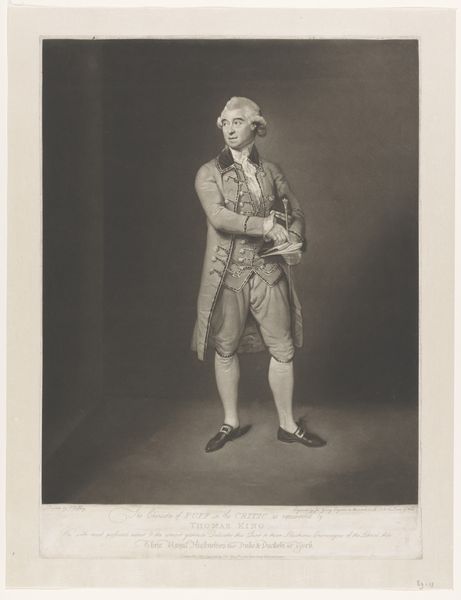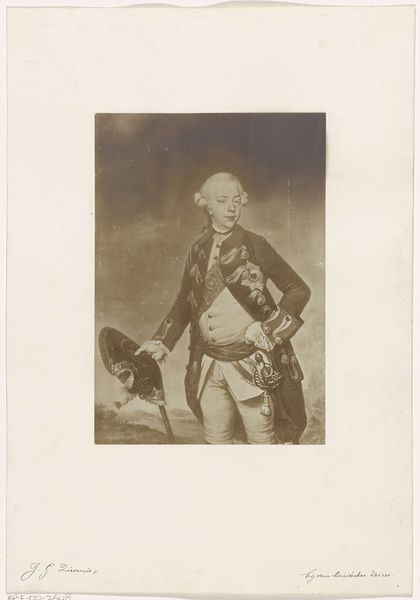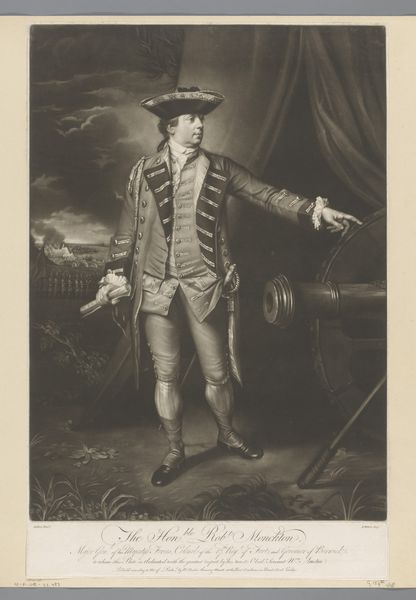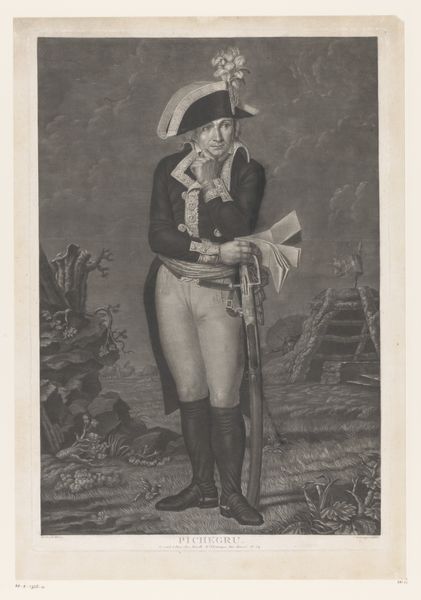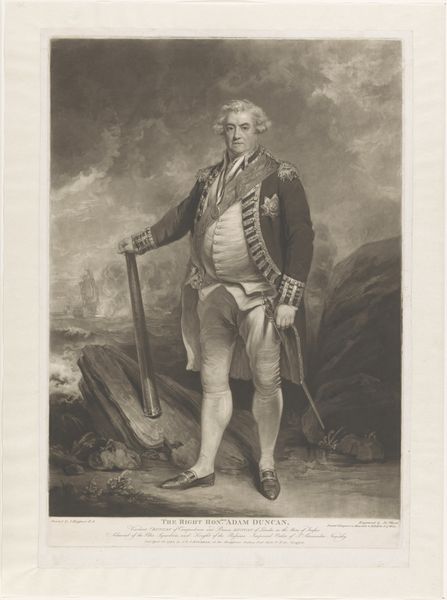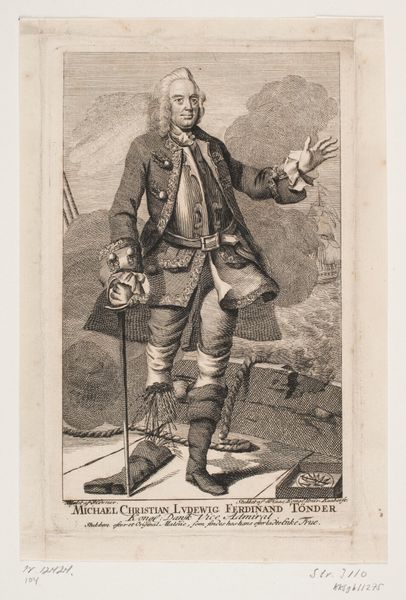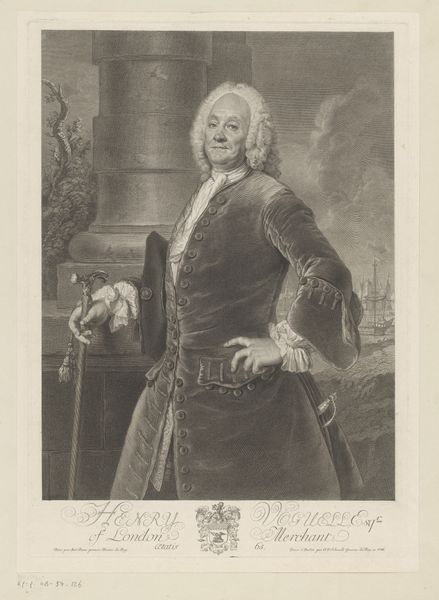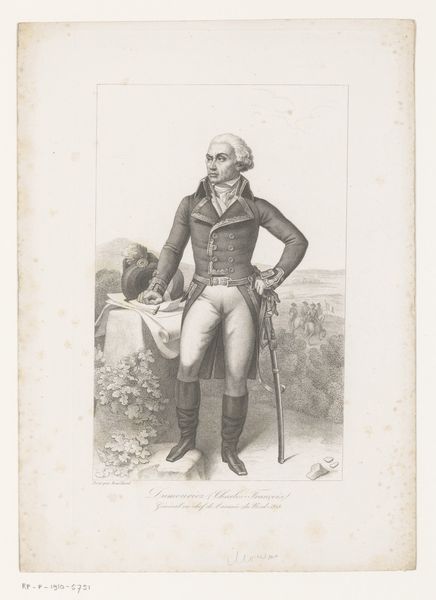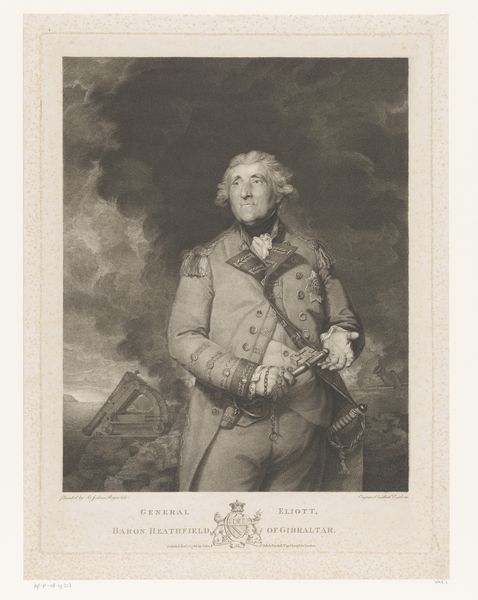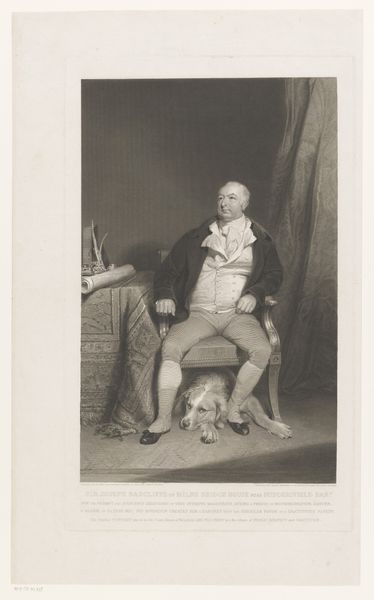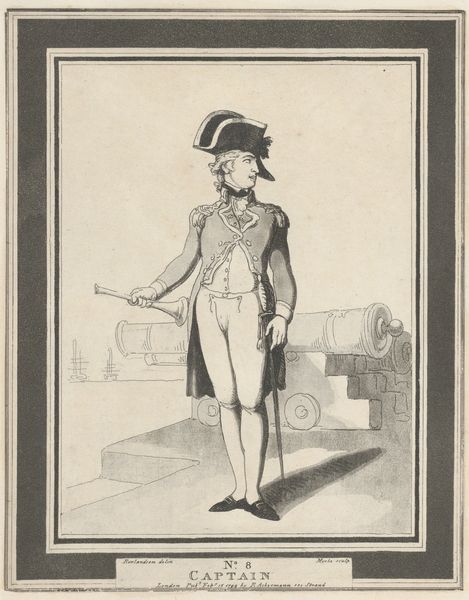
drawing, print, engraving
#
portrait
#
drawing
#
neoclacissism
# print
#
figuration
#
line
#
history-painting
#
academic-art
#
engraving
Dimensions: height 409 mm, width 278 mm
Copyright: Rijks Museum: Open Domain
Editor: Here we have Charles Edward Wagstaff’s "Portret van Gebhard Leberecht von Blücher" from 1839, an engraving on paper. I find the detail achieved through the engraving technique striking. What can you tell me about the process and its impact on this portrait? Curator: This print underscores how material conditions shape even seemingly straightforward portraiture. Consider the engraving process: a design meticulously incised into a metal plate, then inked and pressed onto paper. The *means* of reproducing Blücher’s image, and making it accessible to a wider audience, directly relate to his social role. It reinforces Blücher's status through dissemination but is also dependant on the labor needed to engrave, print, and distribute. How does this reproducible format speak to ideas of heroism and celebrity at the time? Editor: That's fascinating. I hadn't considered the mass production aspect so central to its meaning. Does the choice of engraving over other available methods suggest anything about the artist’s or the patron’s intentions regarding its circulation and reception? Curator: Precisely. Engraving allowed for sharp lines and intricate detail, mirroring the Neoclassical style and conveying authority and precision. Other techniques may be faster and cheaper, but lack the refinement, that may connect with the rising middle class audience. Was it more important for the portrait to reach as many people as possible? Or target it to an affluent group who would value fine details, perhaps like an item of status? The labor embedded within speaks volumes. What is left out can also be telling. Editor: I see what you mean. Examining the labor and material decisions gives me a better appreciation for the cultural value this print held in its time. Thanks! Curator: Absolutely. Recognizing the relationship between materials, labor, and dissemination unlocks deeper understandings within art history.
Comments
No comments
Be the first to comment and join the conversation on the ultimate creative platform.
